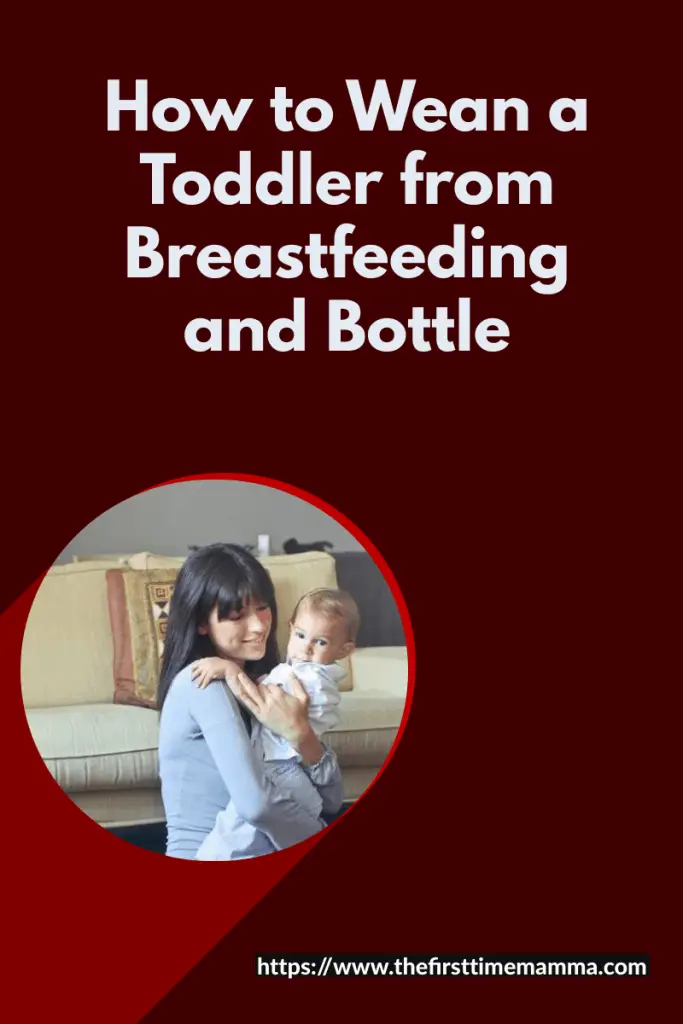Weaning is designed to be a rite of passage for babies. It typically starts after your baby becomes at least two years old and is a stage in their lives where they assert their independence and become free of the need to nurse. It is a time where your baby needs you to continue being there for him but in a reformed capacity. The baby obviously still needs you to keep on guiding, protecting, and being very present in their growth and development.
Hey! By the way… any links on this page that lead to products on Amazon are affiliate links and I earn a commission if you make a purchase. Thanks in advance – I really appreciate it! .
While some babies like a teenage child seem all too eager to be rid of you, others are not that willing to take the big step. It will take courage on both your sides to wean a very attached toddler smoothly and seamlessly.
Here you’ll learn how to wean a very attached toddler still have a very happy little tot.
Take it gradually
Your baby at this point has never considered that his daily feeding on breast milk will one day stop. He probably thought they have their food and I have mine. It will be doubly difficult to make this move if you try to rush through it. Considering your baby’s dependence and attachment to breast milk, his routine of clinging to you to feed, you can’t cold-turkey it.
Try to plan; talk to your child about it, they understand more than we give them credit for. You can read some books with your baby about a child being weaned to put him in that mindset months ahead. Also, mentally prepare yourself for the resistance your child may pose to being weaned. When your baby reacts angrily and with frustration, then loosen up a bit and take it even more gradually.
Explore other foods
Ensure that before you wean, you have introduced solid food to your baby to an extent that they are now an everyday thing for him. He should have already gotten used to participating during mealtime with the family and has practiced self-feeding. If you haven’t done this, then take a step back and do it first before starting the weaning process to prevent malnutrition.
Stop using nursing as a soothing mechanism
This means you’re not to use nursing to calm your child or get him settled after an injury or to get him to sleep. You want your baby to be able to express the pain of getting hurt through crying not by stuffing it down with breast milk. Try your best to ensure that your baby does not go straight to bed after a feed, this helps to dissociate sleeping with nursing.
Cover up
Just like we clear out our refrigerator when we are trying to give up our fatty and greasy food, you also need to take measures to ensure that your little one sees as less of the boobies as possible. Wear some clothes that cover your breasts for the beginning of the weaning period; out of sight is out of mind.
Pass the Baton
Let your partner take over when your baby will expect to be nursed like at the morning feed or evening feed. Initiate that substitution and let your toddler realize that either of you can handle the morning and evening routine even without breast milk.
Take some sessions out
Reduce how frequently you feed your baby during the day and instead put in solid food and some playtime. The more your baby experiments with solid food, the better and easier the weaning will be for him. You can still have your evening feed before bed at the beginning but ensure that you don’t nurse him back to bed when he wakes up at night.
Strike some minutes off
This means you reduce how long you nurse your baby at a sitting. You can do this by only nursing after your baby has eaten his solid food. This allows him to be nourished and partly full so he doesn’t need to nurse for long.
Be affectionate
The reason why it is difficult to wean a very attached toddler is not that they aren’t ready to move on from breastfeeding, it’s because they know that nursing isn’t about the milk only. It is about being held, comforted, and loved, it is about having that skin-to-skin relationship with you and by weaning; they feel they’ll lose that. Make a conscious effort to give your baby an extra kiss, a warm hug, lots of giggles, and fun playtime. It will make him be more open to being weaned when he knows he isn’t losing anything.
Be patient, wait it out
If your baby is ill or going through teething with a new set of molars coming out, then wait it out. Be patient, don’t rush into it because you think he is ready. When he gets better, he becomes ready and you can proceed.
Change your routine
Gradually change things up when you wean. Introduce more interesting and engaging playtime instead of those feeding sessions you’ve taken out. Do a lot of outdoor activities like picnics and pool dates to allow him to explore and become fascinated.
You can say no
Most parents prefer the ‘don’t offer; don’t refuse technique’ to this one and both ways have their advantages. In the ‘don’t offer don’t refuse‘ technique, you get to evade being asked by your kid by not bringing it up, to begin with. This approach, however, allows you to teach your little one about certain boundaries that needs to be kept. So be nice and gentle and say something like, ‘I know this is hard for you bunny but you’re a strong boy and you already know that the boobies have gone night-night.’ You succeeded in saying so sweetly and introducing them to the times when boobs are not available.
To wean a very attached toddler can be hard because it’s a new step and a major transition in a baby’s life, yet it can be fun and beautiful for the whole family.

